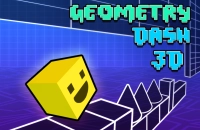2048
2048
Connecting to game server...
0% complete

2048
Click to start playing
🕹️ You May Also Like












2048
The addictive sliding puzzle challenging strategic thinking. Merge numbered tiles by sliding in four directions to reach the coveted 2048 tile.
2048 is the addictive sliding puzzle game that challenges you to combine numbered tiles. Slide tiles in four directions to merge identical numbers, doubling their value each time. Start with 2s and 4s, and work your way up to the coveted 2048 tile. The game requires strategic thinking and planning ahead, as the grid fills up quickly and wrong moves can end your game.
🎮 How to Play
- 1Arrow keys or WASD to slide
- 2Swipe on mobile devices
- 3R to restart game
💡 Game Tips
- 💡Keep your highest tile in one corner
- 💡Build up numbers in rows or columns
- 💡Don't randomly slide - plan your moves
- 💡Focus on merging smaller numbers first
📚Complete Strategy Guide
Master 2048 with our comprehensive guide and pro tips
Basic Strategy
2048 is the mathematical puzzle phenomenon that combines simple mechanics with deep strategic thinking to create endlessly engaging gameplay. Success requires careful planning, pattern recognition, and understanding of number progression mathematics. The objective is to combine matching numbered tiles to reach the coveted 2048 tile, though skilled players can continue far beyond this initial goal.
Corner Strategy Fundamentals: The most effective 2048 approach involves keeping your highest tile in a corner position, typically the bottom-right corner. This strategy maintains the highest tile in a stable position while allowing systematic building of supporting tiles in descending order along the edges, creating a more manageable and predictable board state.
Edge Building Technique: Once your highest tile is cornered, build the second-highest tile adjacent to it along an edge, followed by the third-highest, creating a descending sequence. This approach prevents the highest tiles from becoming isolated in the center where they can disrupt lower-level combinations and strategic flow.
Directional Discipline: Limit movement to primarily three directions, avoiding the direction that would move your highest tile away from its corner position. For bottom-right strategy, use primarily right, down, and left movements while minimizing upward moves that could destabilize your carefully constructed tile hierarchy.
Combination Planning: Think several moves ahead to identify potential tile combinations and avoid creating board states where beneficial merges become impossible. Understanding number sequences and planning combination chains allows for more efficient progress toward higher numbered tiles and better overall board management.
Advanced Tips
Snake Pattern Mastery: Develop expertise in creating snake-like patterns where tiles flow in alternating directions along board edges. This technique maximizes available space while maintaining logical tile progression, allowing for more complex combinations and higher score achievements.
Emergency Management: When the board becomes nearly full, prioritize creating any possible combinations rather than maintaining perfect strategy. Sometimes accepting suboptimal moves is necessary to prevent game-ending situations and maintain forward progress toward higher tiles.
Multi-Move Visualization: Advanced players visualize several moves in advance, considering how each potential move affects future combination possibilities. This forward thinking prevents moves that create beneficial short-term results but lead to problematic board states later in the game.
Probability Understanding: Recognize that new tile placement involves randomness, but understand the probability patterns (90% chance of 2, 10% chance of 4) to make informed decisions about risk management and strategic positioning based on likely tile spawn locations.
Board Space Economics: Treat empty squares as valuable resources to be managed carefully. Maintaining adequate space for maneuvering while building toward large combinations requires balancing immediate needs with long-term strategic positioning.
Level Walkthrough
Opening Game (0-512): Focus on establishing corner strategy and building fundamental tile positioning habits. During this phase, mistakes are less costly, making it ideal for practicing movement discipline and developing muscle memory for effective directional patterns.
Mid Game (512-2048): Implement more sophisticated combination planning while maintaining corner strategy discipline. This phase requires increased attention to board management and begins testing your ability to plan multiple moves ahead while avoiding dangerous board states.
Advanced Game (2048-8192): Navigate complex board states where single mistakes can end the game. Success requires mastery of all fundamental strategies plus advanced techniques like temporary strategy breaks and complex combination sequences to achieve higher-numbered tiles.
Expert Level (8192+): Achieve scores that require near-perfect play and deep understanding of mathematical progression patterns. At this level, every move must be calculated carefully, and players must demonstrate complete mastery of all strategic elements to continue advancing.
Endgame Management: When approaching board capacity, focus on creating any available combinations while looking for opportunities to restore strategic positioning. Sometimes radical strategy changes become necessary to continue the game when traditional approaches become impossible.
Common Mistakes
Corner Abandonment: Moving the highest tile away from its corner position often leads to board chaos and makes achieving high scores significantly more difficult. Maintain corner discipline even when tempting combination opportunities appear elsewhere on the board.
Premature Combination: Combining tiles before setting up proper supporting structure often creates isolated high-value tiles that become difficult to use effectively. Plan combinations as part of larger sequences rather than pursuing immediate gratification.
Random Direction Usage: Moving in all four directions without strategic purpose creates chaotic board states that become increasingly difficult to manage. Develop directional discipline and stick to three-direction strategies for optimal results.
Ignoring Board Density: Failing to maintain adequate empty space for maneuvering leads to forced moves and suboptimal positioning. Always consider space management when planning tile combinations and strategic positioning.
Panic Moves: Making hasty decisions when the board becomes crowded often worsens the situation rather than improving it. Take time to analyze available options even in seemingly desperate situations.
Score Optimization
High Score Pursuit: Achieving maximum scores requires combining perfect strategy execution with extended gameplay endurance. Focus on maintaining consistency rather than pursuing risky moves that might yield slightly higher immediate scores but threaten game continuation.
Efficiency Metrics: Track moves-per-tile and time-per-game statistics to identify areas for improvement. Efficient play demonstrates mastery of fundamental concepts and strategic understanding beyond just achieving high individual scores.
Streak Building: Develop consistency in reaching specific tile targets (2048, 4096, etc.) across multiple games. Reliable performance demonstrates true skill rather than occasional lucky runs, and builds confidence for attempting higher goals.
Speed vs Accuracy: Balance quick decision-making with careful analysis to optimize both score and gameplay efficiency. Rushed moves often lead to errors, while overthinking can create analysis paralysis that prevents strategic flow.
Personal Best Management: Set progressive targets that challenge current abilities while remaining achievable. Gradually increasing score goals maintains motivation while ensuring steady improvement in strategic understanding and execution capabilities.
Final Pro Tips
Pattern Recognition Development: Study common board configurations and develop instinctive responses to frequently occurring situations. Pattern recognition allows for faster decision-making while maintaining strategic accuracy throughout extended gameplay sessions.
Mathematical Understanding: Appreciate the underlying mathematics of tile progression and exponential growth. Understanding that each tile level represents doubling provides insight into score scaling and helps with strategic planning for long-term objectives.
Patience Cultivation: Resist the urge to make quick moves without proper consideration. 2048 rewards careful thought and planning over reactive gameplay, with patient players consistently achieving better results than those who rush through moves.
Alternative Strategy Exploration: Experiment with different corner positions and edge strategies to understand various approaches. While bottom-right corner strategy is most common, understanding alternatives provides flexibility for different board situations and personal preferences.
Mental Stamina Management: Develop focus endurance for extended high-score attempts. Maintaining concentration during long games requires mental preparation and strategies for staying alert throughout the gradual progression toward higher tiles.
Mistake Recovery: Learn to recover from strategic errors rather than restarting games immediately. Working through difficult board states develops problem-solving skills and provides experience in managing suboptimal situations that inevitably arise.
Community Learning: Engage with other 2048 players to learn advanced strategies and share experiences. The game's community has developed sophisticated techniques and insights that can accelerate individual improvement and understanding.
Persistence Balance: Maintain determination while recognizing when games become unwinnable. Learning when to continue fighting versus when to start fresh is an important skill that prevents frustration while maximizing improvement opportunities.
2048 represents the perfect balance of simple rules with complex strategic depth, offering players an engaging mathematical puzzle that rewards both logical thinking and long-term planning through elegant game design that continues to challenge players regardless of skill level.